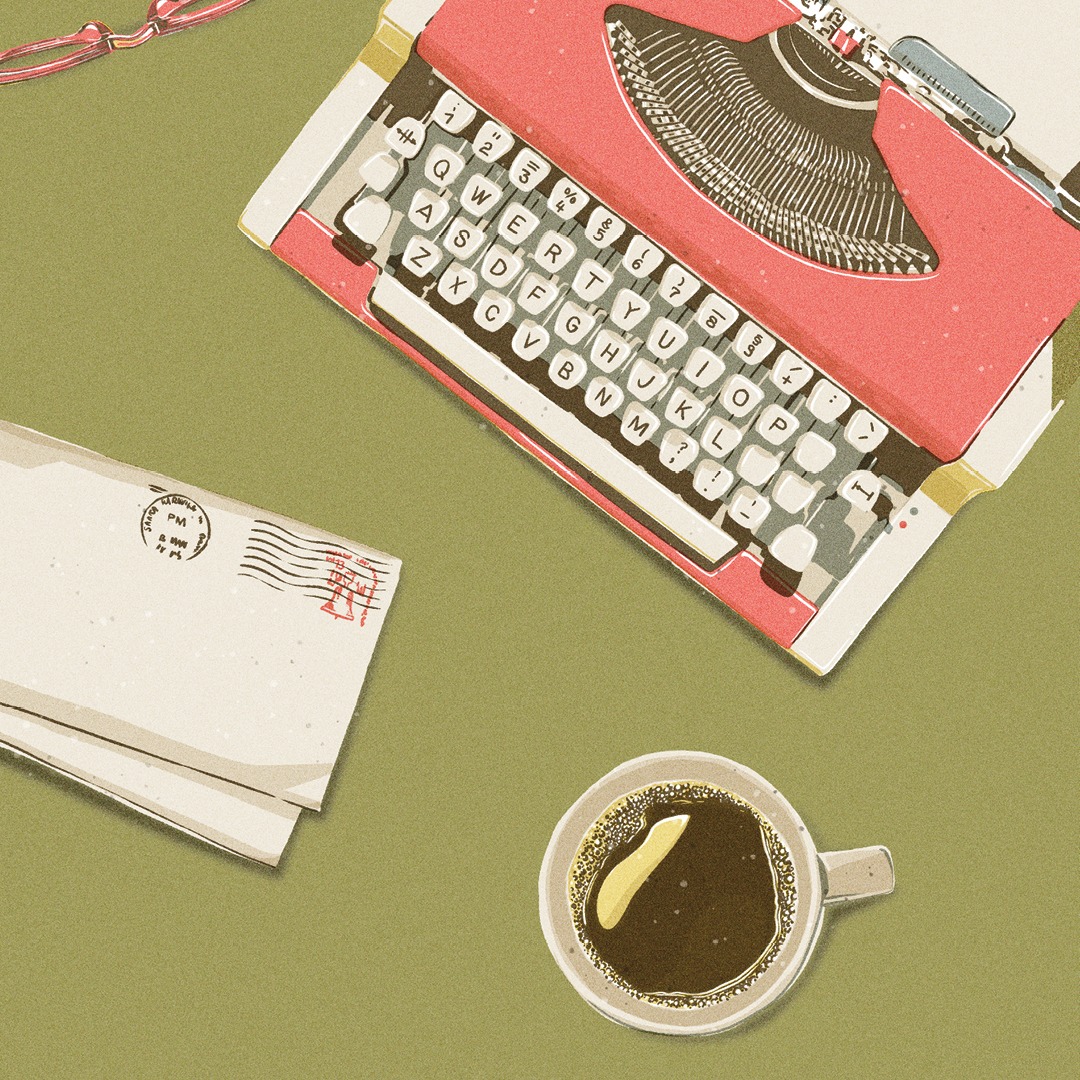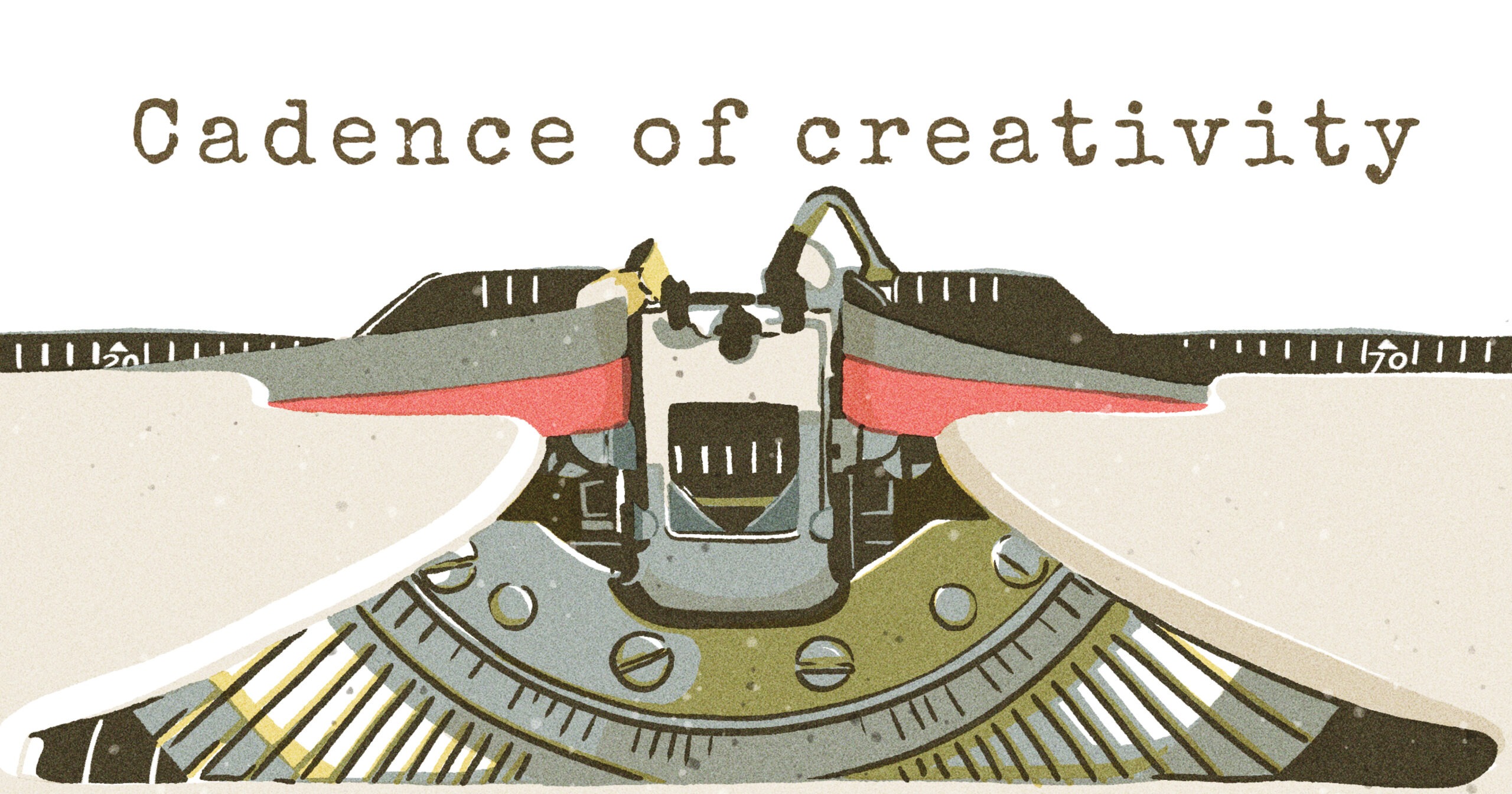Even unzipping the case of a 1960s Olivetti Lettera 22 typewriter sends a thrill through the body. Cup of tea on the desk, thesaurus and a childhood dictionary placed neatly alongside, and an intention that here is the time to create. Rolling the paper into the machine, the first line is slowly pondered and, as keys steadily clunk beneath fingertips, the heart jitters at the thought of what might bloom upon the page. There is a sense of care for the ritual, a respect for the act of creativity itself. No distractions, no unnecessary rambling and endless temptation to cut and paste, no attempts for instantaneous perfection, just pure connection between writer and page. I breathe, and begin…
Ever since the first commercial typewriters were introduced in the late 19th century, writers around the world have tapped into their magic. Some out of necessity in an analogue world, others by choice and a few as an act of rebellion in a right-now culture. American novelist, short-story writer and journalist Ernest Hemingway apparently liked to stand while writing his books on a Royal typewriter set up on a high bookshelf. Danielle Steel, best known for her romance novels, is famed for pounding out her many books on a trusty 1946 Olympia – named Ollie – bought in a secondhand-typewriter store.
Amy E Casey, an author based in Wisconsin in the US, is another creative who embraces the typewriter’s merits in her own work. She says: ‘While writing my novel The Sturgeon’s Heart, I worked at the typewriter any time I was generating a scene for the very first time. Typewriters are idea machines and are incredibly powerful at drawing ideas from mind to hands to page. They can only move forward, and with each punch of a key, you feel that movement forward, you build momentum, you physically feel the vibrations of your thoughts made real in physical space. There are no other options with this machine. Writing is the only thing it can do. And so, you write.’
As Amy continues, it seems as though she also finds release in this way of writing: ‘The prose that comes out is surprising, feral, emotive and so utterly free.’ For Amy, this is appealing, the feeling of it being a purer product, of the typewriter nurturing a sense of freedom. As a fellow typewriter user, I also find it relieves me of distractions, such as checking how a blog post is being received or if an email has arrived, as well as that nagging doubt: is this good enough? Nope. Delete. As Amy says: ‘On the typewriter, those aren’t things you can do, which makes it an amazing tool for producing writing that has come into existence without being picked over by one’s mental scavengers.’
Ideas from the heart
Janice MacLeod, creator of letter-writing subscription project, Cottage Letters, and author of Paris Letters, fell in love with typewriters during the Covid-19 pandemic when she was gifted an old manual model. ‘It reminded me of the joys of typing on a typewriter when I was a kid, back before correction tape and screens, when mistakes happened and that was just fine.’ Janice harnesses this sense of liberation in Cottage Letters: ‘My one goal each month is to exquisitely describe the month as best I can, and for that I use my secret weapon: the typewriter.’
Janice has about a dozen pen pals and types the same letter to each of them, but says: ‘Every time it’s different, there is another detail I remember, a better way to turn a phrase, or a parallel metaphor is revealed’. She then uses elements from each letter to create something new and heartfelt for subscribers. ‘Typing taps into the same source I feel when meditating and I also feel my chest sort of vibrate when I type,’ she says. ‘I believe the body holds memory, and whatever memories are inside are jostled when typing. If you think about it, the chest is face to face with the keyboard, like the chest is doing the writing.’
Importantly for Janice, there’s no plan or agenda when she starts the process: ‘Let me be crystal clear on this point: I never, ever have something interesting to say before I sit down at the typewriter. Not a clue. I sit down, put the paper in and… wait. The typing itself gets me into the mindset to create, I don’t get into a [creative] mindset first.’
She ponders also the plunking away, sitting with your thoughts and staring off into the distance before typing some more, all of which highlight the beauty of being ensconced within the act of writing. So great is the appeal that Janice, whose typewriter collection has grown to 12 since that first gift, is now considering typing up first drafts of her books as well as her letters: ‘It feels like a ride I’m on, but a slow ride, like an olden-day kids’ train. For me, the lack of distraction is at play, especially since the typewriter has its own noise – you can’t be watching TV when you’re typing.’
In the pink
Woz Delgado Flint, author of 2023 book, The Distraction-Free First Draft, is similarly entranced, though she was, perhaps, slower to fully embrace the analogue opportunity. Based in Albuquerque in the US, she explains: ‘My first typewriter was a pink 1961 Olympia, given to me by my husband and son as a gift for Mother’s Day. It was more of a symbol of me as a writer, not necessarily meant to be used to actually write, but fast-forward 10 years – to a time when the whole world shut down for a while, leaving everyone in their homes to contemplate life, as it were – and I got curious about that pink typewriter.’ She found a local repair shop that gave the Olympia, affectionately named Louise, a full tune-up and, as she says: ‘Not only did it work perfectly, but typed in cursive, too. Ooh la la!’
Two years later, while touring the southwest of the US, Woz realised that she’d written more in that time than over the previous two decades: ‘The typewriter had been the key. I became aware that, when writing on a computer, the editor [in me] sits right next to the writer in me and nitpicks my every word choice.’ It made her wonder if other writers might also benefit from unplugging – and her book was born. ‘Writers often find themselves writing and rewriting the same paragraph for hours, days, months. With the blinking cursor on the digital screen, it’s so easy to let perfectionism take hold again and again.’ Woz’s book, on the other hand, encourages writers to write – and to do so joyfully: ‘To the delightful soundtrack of clicks, clacks and end-of-line dopamine bell-ringing dings.’
In societies where speed seems ever more of the essence and new tools to write quicker, better and more successfully appear all the time, it feels deliciously disobedient to roll back the years, roll in the paper and slow down the process of committing words to the page. As Amy says: ‘I don’t want a robot to suggest or supplement my wording. It does take longer, but it comes from a deeper place as a result.’
Typing the final paragraph of this article, I feel this acutely. It’s as if a little more of myself has flowed from fingers to keys to page. Not to mention that a full and heartfelt first draft, complete with mistakes and pencil markings in the margins, sits before me as a permanent reminder of a writer’s true creative journey. Because what is art without the mess, the experimentation, the rhythm of passion – and sound – running through it?
Slow the flow
If there’s a typewriter languishing in your loft or at the back of a wardrobe, now’s the time to let it see the light of day. Alternatively, you could ask to borrow a friend or family member’s machine or see if any secondhand options are available to buy. Experiment with this rhythmical process of cultivating words. Here are some tips to get in the zone:
- Close your computer and put your phone in a drawer.
- Make a pot of your favourite blend.
- Dig out physical copies of a thesaurus and dictionary.
- Pop on some relaxing music (perhaps from the era of your typewriter).
- Set up your machine on a desk – if possible, in a room with a window.
- Take a deep breath and a moment to ponder, before letting your fingertips glide and the cadence of creativity take hold.
Alice is a writer and yogi who travels between a narrowboat on the canals of England, a cottage in rural France and a tiny camper on the open road – always with her trusty Olivetti Lettera 22 by her side. Follow her musings at slowintotheseasons.substack.com
Find Amy at amyecasey.com and on Instagram @amy_e_casey, Janice at janicemacleod.com and janicemacleodstudio.etsy.com, and Woz at wozflint.com and on Instagram: @wozflint


